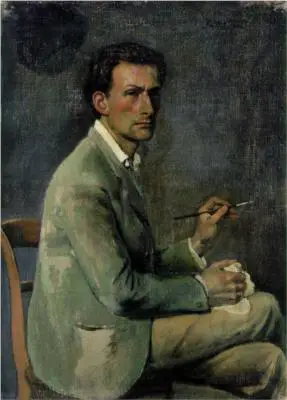Balthus was a Polish-French painter best known for his enigmatic and controversial works. His paintings are notable for their dreamlike quality, eroticism, and depiction of adolescent girls in provocative poses. Despite the controversy surrounding his work, Balthus is regarded as an important figure in twentieth-century art.
Early Childhood and Education
Balthus was born to an artistic family in Paris in 1908. His father was a well-known art historian, and his mother was an artist. Balthus developed an early interest in art while growing up in this environment and began studying painting at a young age. He was primarily self-taught, but he was also mentored by his mother and her circle of artists and writers.
Balthus relocated to Switzerland in the 1920s, where he continued to refine his distinct style. He travelled to Italy to study Renaissance art and spent time in the Swiss Alps, which inspired his landscapes.
Themes and Style
Balthus’ paintings are notable for their meticulous attention to detail, evocative use of light and shadow, and a sense of mystery surrounding his subjects. His work frequently depicts young girls in sensual poses, and the suggestive nature of his paintings has sparked debate throughout his career. Despite this, Balthus insisted that his work was not pornographic and instead celebrated youth’s beauty and sensuality.
His works have a dreamlike quality to them, and the figures frequently appear to be frozen in time, as if time has stopped. The girls in his paintings frequently have ambiguous expressions, making it difficult to ascertain their true emotions.
Balthus’ paintings also have strong architectural elements, with the settings frequently overpowering the figures. Interiors are typically sparse and austere, with limited colour palettes that emphasise surface form and texture. His paintings’ spaces frequently suggest a sense of confinement, emphasising the sense of tension and unease in his works.
Reception and Career
Balthus’ early career was marked by a series of solo exhibitions in Paris, which garnered him critical acclaim but also sparked debate due to the erotic nature of his work. In the 1930s, his reputation grew, and he became associated with the Surrealist movement, though he never fully identified with any artistic movement.
Balthus fled to Switzerland during WWII, where he continued to paint and write. He returned to France after the war and began a period of intense creativity. He worked on several large-scale projects, including the decoration of Switzerland’s Chapelle Saint-Blaise des Simples and the painting of a mural for New York’s Rockefeller Center.
Balthus’ work became more introspective and personal in his later years. He continued to investigate themes of youth and eroticism, as well as his own childhood memories and fantasies. His later works are often more solemn and introspective, with a focus on psychological depth and symbolic imagery.
For its controversial subject matter, Balthus’ work has been both praised and criticised. Some have praised his ability to capture the mystery and sensuality of youth, while others have criticised his work as exploitative and voyeuristic. Despite this, his paintings have remained popular, and his influence can be seen in the work of many contemporary artists.
Legacy
Balthus is widely regarded as one of the twentieth century’s most important artists. His paintings stand out for their technical prowess, aesthetic beauty, and psychological depth. Many artists have been inspired by his ability to capture the tension and ambiguity of human relationships, and his influence can be seen in the work of contemporary painters such as John Currin and Lisa Yuskavage.
While his work is still debated, Balthus’ legacy is undeniable. His paintings are still on display in major museums and galleries around the world, and his impact on the art world can still be felt today.


























